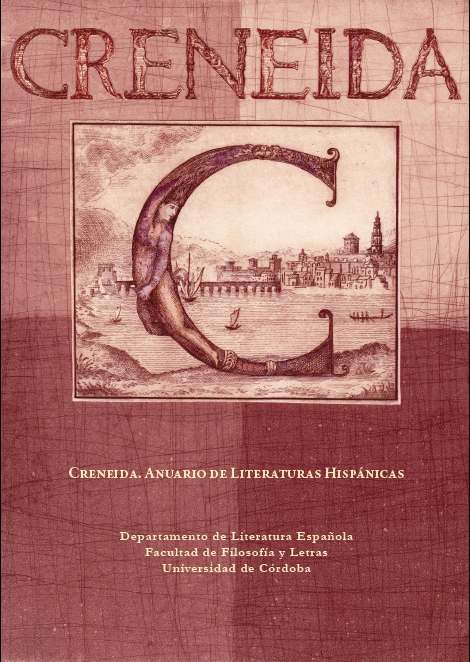Mariano Bertuchi como pintor de la intimidad marroquí
Contenido principal del artículo
Resumen
Este artículo tiene como objetivo recuperar la figura del artista granadino Mariano Bertuchi Nieto (1884-1955), uno de los pintores decisivos en la construcción de imágenes en el contexto africanista de la primera mitad del siglo XX. Considerado por antonomasia “el pintor oficial del Protectorado español en Marruecos”, habría de materializar su proyecto comunicativo de forma exhaustiva a través de diversos soportes expresivos: carteles de turismo, series de sellos, postales, ilustraciones para revistas y libros, y, en sentido estricto, obras pictóricas. Lejos de centrarse en la pintura de corte oficialista salida de sus pinceles, en este artículo se abordan sus comunicaciones plásticas de cariz más intimista, indagando sobre las posibles conexiones entre la literatura colonial de la época y una selección de la producción de Bertuchi durante la década de los Cuarenta.
Descargas
Datos de publicación
Metric
Este artículo
Otros artículos
Revisores/as por pares
0
2.4
Perfil evaluadores/as N/D
Declaraciones de autoría
Declaraciones de autoría
Este artículo
Otros artículos
Disponibilidad de datos
N/D
16%
Financiación externa
N/D
32%
Conflictos de intereses
N/D
11%
Metric
Esta revista
Otras revistas
Artículos aceptados
57%
33%
Días para la publicación
74
145
- Sociedad académica
- Creneida. Anuario de Literaturas Hispánicas
- Editorial
- Ucopress. Editorial Universidad de Córdoba
Detalles del artículo
Cómo citar
ABAD DE LOS SANTOS, B. «Mariano Bertuchi Como Pintor De La Intimidad Marroquí». Creneida. Anuario De Literaturas Hispánicas, n.º 4, diciembre de 2016, pp. 561-90, doi:10.21071/calh.v4i.6400.
Sección
Miscelánea
Avisos de derechos de autor propuestos por Creative Commons
1. Política propuesta para revistas que ofrecen acceso abierto
Aquellos autores/as que tengan publicaciones con esta revista, aceptan los términos siguientes:- Los autores/as conservarán sus derechos de autor y garantizarán a la revista el derecho de primera publicación de su obra, el cuál estará simultáneamente sujeto a la Licencia de reconocimiento de Creative Commons que permite a terceros compartir la obra siempre que se indique su autor y su primera publicación esta revista.
- Los autores/as podrán adoptar otros acuerdos de licencia no exclusiva de distribución de la versión de la obra publicada (p. ej.: depositarla en un archivo telemático institucional o publicarla en un volumen monográfico) siempre que se indique la publicación inicial en esta revista.
- Se permite y recomienda a los autores/as difundir su obra a través de Internet (p. ej.: en archivos telemáticos institucionales o en su página web) antes y durante el proceso de envío, lo cual puede producir intercambios interesantes y aumentar las citas de la obra publicada. (Véase El efecto del acceso abierto).





